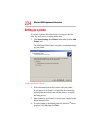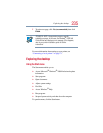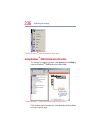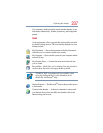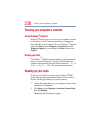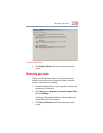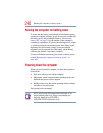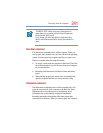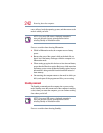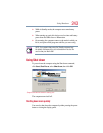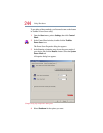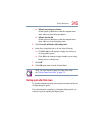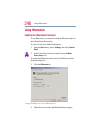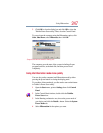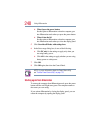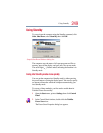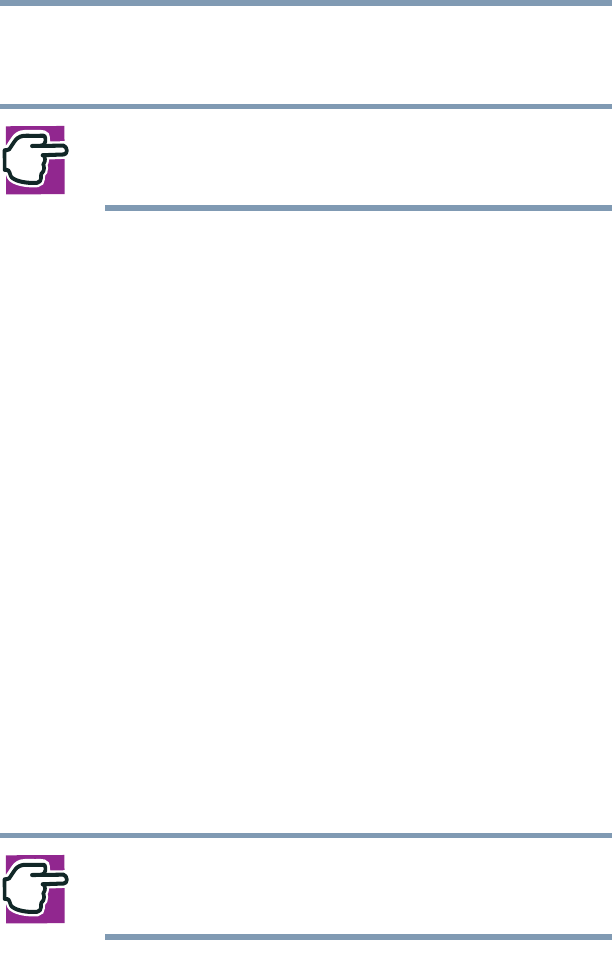
242
Powering down the computer
runs a self-test, loads the operating system, and then returns to the
mode in which you left it.
NOTE: If you use a USB mouse or keyboard, remember to
save your data and close any open applications before
selecting Standby or Hibernation modes.
Factors to consider when choosing Hibernation:
❖ While in Hibernation mode, the computer uses no battery
power.
❖ Because the state of the system is held on the hard disk, no
data is lost if the battery discharges while the computer is in
Hibernation mode.
❖ When starting up again, this choice uses less time and battery
power than the Shut down option. But it uses a little more time
and battery power to start up than the Standby option, because
information is being retrieved from the hard disk instead of
from memory.
❖ On restarting, the computer returns to the mode in which you
left it, and opens all the programs and files you were using.
Standby command
The Standby command puts the computer into a power-saving
mode. Standby stores the current state of the computer in memory
so that, when you restart the computer, you can continue working
from where you left off.
NOTE: If you use a USB mouse or keyboard, remember to
save your data and close any open applications before
selecting Standby or Hibernation modes.
Factors to consider when choosing Standby:



